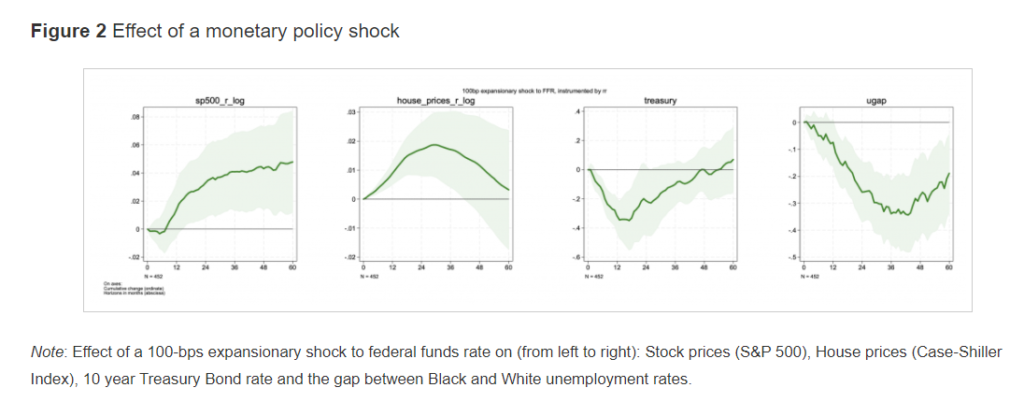Graphic:

Excerpt:
The gap between the income and wealth of black and white households in the US is large and persistent. According to the 2019 Survey of Consumer Finances (SCF), the median wealth of a white household is almost nine times higher than that of a black household. The income gap is smaller (1.7 times) but still large. Moreover, these gaps are as large as they were 50 years ago (Kuhn et al. 2020). Concern about racial inequality has increased recently with evidence that the COVID-19 pandemic is having a disproportionate effect on the black community (Bertocchi and Dimico 2020). These stark facts have attracted the attention of economists (e.g. Mayhew and Wills 2020, Chetty et al. 2018) and policymakers. For instance, Raphael Bostic, president of the Federal Reserve Bank of Atlanta, recently stated that the Federal Reserve “can play an important role in helping to reduce racial inequities and bring about a more inclusive economy”.1
A prominent line of thinking is that an accommodative monetary policy lowers unemployment rates and increases labour income for marginal workers, who are oftentimes low-income and minority households. This is what Coibion et al. (2014) call the earnings channel of monetary policy. More specifically, Carpenter and Rodgers (2004) show that a monetary policy accommodation reduces the gap between the unemployment rates of black and white households.
Author(s): By Alina Kristin Bartscher, PhD candidate, University of Bonn, Moritz Kuhn, Professor at the Department of Economics, University of Bon, Moritz Schularick, Professor of Economics, University of Bonn, CEPR Research Fellow, Member of the Academy of Sciences of Berlin-Brandenburg and Paul Wachtel, Professor of Economics, New York University Stern School of Business. Originally published at VoxEU
Publication Date: 10 February 2021
Publication Site: naked capitalism